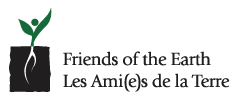Create Your Own Bee Cause Space
 The bees, birds and butterflies need your help!
The bees, birds and butterflies need your help!
Bee losses have been linked to multiple factors, including varroa mite infestations, pathogens, malnutrition, habitat degradation, and the overuse of bee-killing pesticides such as neonicotinoids.
Two-thirds of the food crops we eat every day require bees and other pollinators to successfully produce a crop. So it is of great importance that we do everything we can as individuals to protect bees by creating bee-friendly spaces where we live- spaces where honeybees and wild bees can thrive.
Together, we can start to replace and restore some of the habitat for bees that has been lost, and work to support healthy pollinator populations!
What to Plant:
- Plant native flowers Native plants are best adapted to your region and are better for bees than hybridized plants, which have been bred to be sterile and produce little pollen.
- Choose bee-attractive colours Native pollinators are especially drawn to blue, purple and yellow flowers.
- Select single flower tops Double headed flowers may be attractive to the human eye, but they produce less nectar and make it difficult for bees to access the pollen.
- Choose a variety of flower shapes Different bee species have different tongue lengths, so planting a variety of flower shapes will benefit the bees. While short-tongued bees are most attracted to shallow flowers, long-tongue bees are most attracted to flowers with deep corollas and hidden nectar spurs. Flowers with short tubes, or no tubes at all, are the most likely to attract a variety of bees.
- Plan for blooms all season long Plant at least three varieties of flowers to ensure they continue to bloom through as many seasons as possible, ensuring a constant food supply for pollinators.
With the help of experts such as Professor Dave Goulson, Dr. Elizabeth Elle, Sheila Forsyth and Scott McIvor, we have compiled some things you can do to create a Bee Cause space in your own backyard.
Here, we offer you fact sheets on how to provide bee-friendly habitat:

Plant Trees and Shrubs for Blooms in Every Season– follow our chart which lists bee-attractive native shrubs and trees and when they bloom!
 Plant BeeBalm – as the name suggests, bees love this bright and colourful flower, as will you! It’s easy to grow, needs little attention and the flowers can even be made into a delicious tea.
Plant BeeBalm – as the name suggests, bees love this bright and colourful flower, as will you! It’s easy to grow, needs little attention and the flowers can even be made into a delicious tea.
Plant Echinacea – It attracts butterflies and hummingbirds galore! It is one of the more hardy plants, and replants itself every spring! It is also very happy to live in a pot- condo dwellers rejoice!
– It attracts butterflies and hummingbirds galore! It is one of the more hardy plants, and replants itself every spring! It is also very happy to live in a pot- condo dwellers rejoice!
 Create a Bee Home – While bumblebees are a little pickier on their space, creating a bee home means you may be hosting up to 100 bumblebees in your backyard. Your flowers will thank you for the TLC these bees will provide!
Create a Bee Home – While bumblebees are a little pickier on their space, creating a bee home means you may be hosting up to 100 bumblebees in your backyard. Your flowers will thank you for the TLC these bees will provide!




